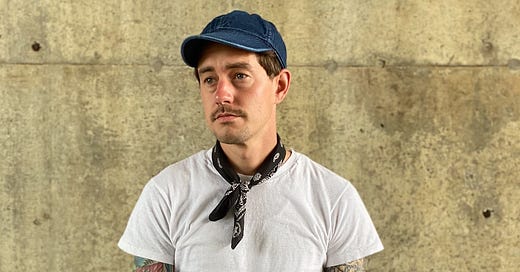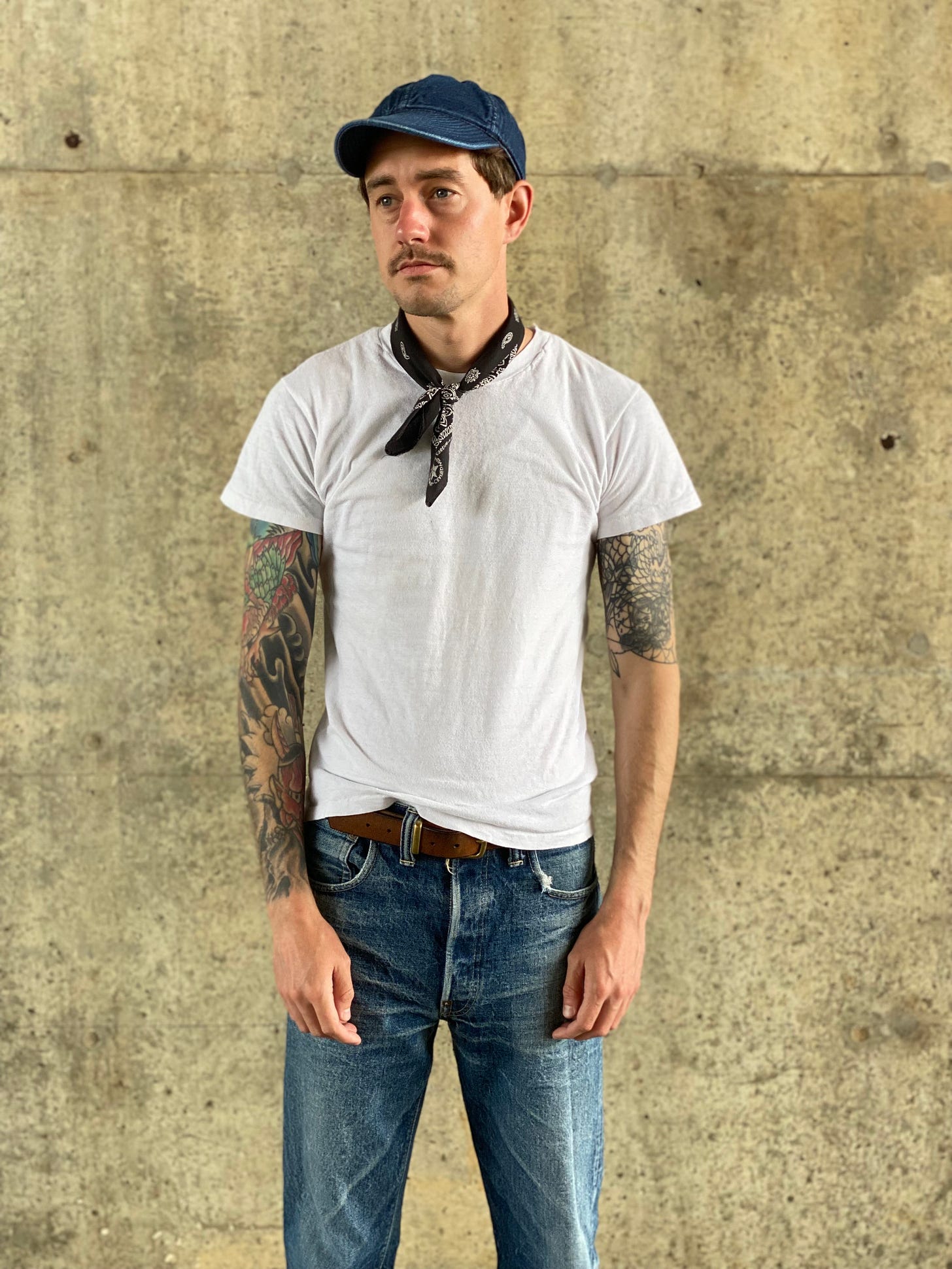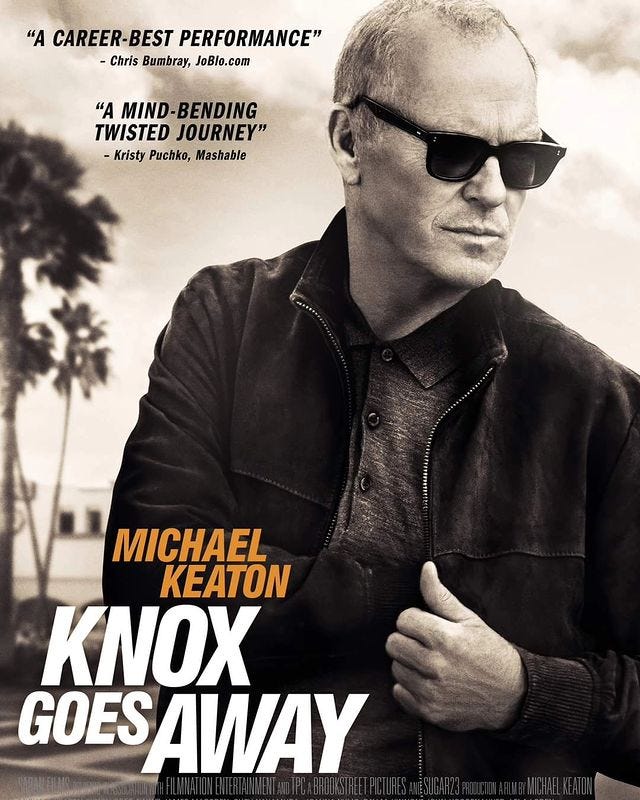Issue #32 | Vintage Hound
Vintage broker Austin Reynolds on working in Japan, $20,000 dead stock Levi’s, one-of-a-kind WWII souvenir jackets, and more
Happy Friday and welcome to Front of Book,
Last week I had a chat with a fascinating guy out in Santa Rosa, California, named Austin Reynolds. Austin’s job is what he describes as a vintage “broker.” He scours the Internet and country for rare vintage pieces that he buys and sells to a store in Japan called Mushroom Vintage. He’ll sometimes fly out to, say, a farm in Ohio to drop $20,000 in cash for a pair of dead stock Levi’s. He visits Japan a few times a year, which is as much for play as it is for work.
He’s also a talented photographer and has a show upcoming in Brooklyn starting August 30.
Here’s our conversation, edited for length and clarity.
FRONT OF BOOK: So what’s your backstory? How did you get into vintage hunting?
AUSTIN REYNOLDS: I’m new, relatively speaking. I’ve been doing this for about three and a half years almost. My wife and I always just casually went to thrift stores, having fun finding something or going to a flea market. And in California, the swap meet culture is popular, whether you’re rich or poor, you go to Rose Bowl, which is really nice. Everybody does it. So that kind of started when I first moved out here, but with the vintage thing, I just thought it was fascinating to find Made in USA. I mean, it just felt like kind of a little game.
I didn’t really think anything of it, but finding anything that said Made in USA was pretty difficult. And that’s kind of how I got into clothing. I was amazed how few items of clothing are made here. And then I started going to thrift stores and just grabbing whatever I could that said Made in USA with no knowledge, being slightly ignorant and just kind of discovering along the way.
So how did you go from just being interested in vintage and Made in the USA to actually starting a business and especially working in Japan?
Once you get into this, when you start adding people on Instagram and you’re meeting people at the swap meets, I was seeing the caliber that they were getting and it was enticing. I really liked denim, at the heart of it. I started seeing these people that were getting these old Levi’s and I started figuring the only way to get this stuff is I have to buy it.
And I was fortunate enough when I started, I was doing the Alameda antique fair and there was this older guy that was buying Levi’s for Levi’s, for one of their new projects, and he was paying a handsome amount for each pair. So I just made it a mission each month to buy these Levi’s, they call them red lines, the selvage pairs from the seventies and eighties. And I just got a hunk of cash from him—it’s gambling, essentially, this whole thing is gambling. And I would get this crop of cash and I would spend it all essentially each month and just keep buying the Levi’s.
And eventually me and him stopped working together and I was stuck with 50 pairs of red lines and I spent all my money on them… I reached out to this Japanese store and they got back to me, which I was kind of surprised, and they bought them all and he asked, do you have more stuff? It was pretty organic. I realized he was easy to work with and I just lucked out.
So you mentioned the Rose Bowl and Alameda. Where else were you finding some of this stuff?
Instagram. I would say 90% of my business is online, buying and shipping to me. And at this point people just reach out and I try to be as simple and straightforward as possible. If it’s a big item, I fly out for special items.
Really?
One, it makes it exciting—I’m passionate enough about it to get on a plane and travel to small town Ohio somewhere to buy something cool. Yeah, it’s very exciting. Treasure hunting. I very well could just have them ship it, but it’s a little bit anxiety ridden to have an item over $10,000 being shipped to you. And a lot of these guys, they want cash. A lot of these younger people, they don’t want to pay taxes or I don’t know exactly if that’s the reason, but they assume that there’s going to be a lot of fees.
There’s a niche group of us in the U.S. that understand vintage clothing, but it’s not necessarily as legitimate of a business as it is in Japan, where you can take a loan out of the bank to start your business. I don’t think you can do that here and a bank will understand, but vintage clothing in Japan is almost beyond luxury clothing. You’re walking out of the store with interest starting—you walk out with a brand new car here, you’ve already lost all your money, [but] just like buying any designer clothes clothes, [with vintage] you’ve bought an investment and a strong one. As long as it’s strong in Japan, it’s strong here.
So in Japan, do you work with one shop or is it multiple?
I’m pretty loyal to the store I work with and I think long game, so I tend to just go back to them. We have a good relationship. However, there are some times where I do shop items for other stores that pay stronger. If I’m invested $20,000 in an item, I don’t necessarily want to lose money on it. I’m okay hedging and losing a little bit, but there’s a certain limit to where I have to cap out.
Other than vintage denim, what are the items that they’re looking for in Japan these days?
Well, that’s the gambling part. Mushroom’s clientele is a certain demographic. His store is in the middle—not the middle of nowhere, but from Tokyo it’s about a two hour train ride. Then you have to take another half an hour train ride or he’ll come and pick you up. For the most part, he picks up his clients and you go to the store. So it’s kind of an ordeal. And so the people that are going there are pretty determined to buy an item, and to me, just like when I fly out to buy an item, it makes the whole thing special.
But I would say popular items as of right now, what I try to buy are sukajan jackets—souvenir jackets. Those have skyrocketed in price, and it’s amazing to see this, it’s like a stock market. In fact, I would say it’s even crazier than seeing the stock market. They were insignificant two years ago, and now they’ve gone up like a thousand percent.
What’s an example of one of these jackets?
Japanese souvenir jacket from the forties or fifties. I think they go up until the sixties or seventies, but primarily you’ll see forties and fifties and a lot of the times they were tailor-made for someone finishing the war and bringing it back over either for themself or their for their child or wife. You’d see a lot of Vietnam souvenirs will have the tiger and with a quote and they’ll have the date. Like the film Ryan Gosling was in, Drive. He’s wearing a reproduction sukajan jacket, but that’s the inspiration.
Cool.
We see him as just bomber jackets now. That’s very popular over there.
What would be the price for those?
That is pretty contingent on color, design, and size, which is I would say trumps the other two. Big size in Japan is popular, especially among the youth, oversized clothing with sleeves going past the wrist. It used to not be a popular item from what I was told, but price-wise, on average, you are looking at $600 to $1,200 for a pretty basic design.
You mentioned going and buying a $20,000 item. What are the items that would get up into that ballpark?
Well, Levi’s dead stock. Yesterday, for example, I bought a pair of dead stock, 1950s 501xx for $23,000.
Wow.
Yeah.
Exciting.
It’s an anomaly. That doesn’t happen all the time, so it was exciting.
How many times a year do you go to Japan?
At this point, It’s roughly three or four times a year. It’s more so out of joy for going. I feel extremely grateful that I’m able to work there, and I just culturally, I like being there. I make it also work, but it’s not just work. It’s pleasure.
When you go there, do you buy things for yourself?
Yeah, the shopping experience in Japan is much better than it is here. I thoroughly enjoy buying personal items there. One, I like buying it at the full value. I know I’m dedicating myself to buying it and wearing it rather than getting it here at a price where I think I can make profit. And in a business aspect, I’m just not really doing my job if I’m buying items here and keeping them, right? So I like buying personal items there.
Do you yourself mostly wear vintage or is it a mix of contemporary and vintage?
I definitely thoroughly enjoy wearing vintage clothes. I’m very picky. I started, like I said, with denim, putting in the work myself… the whole denim nerd thing, I would categorize myself in that mix. I like quality. That’s kind of all it comes down to, but with vintage jeans, once you start getting your hands on them and then touching newer jeans and reproduction, it is difficult to go from one to the other. There’s no comparison to me. There’s no comparison.
What are some of your favorite vintage items?
Oh, well, the trucker jackets. I love the Levi’s Big E Type 3s… I can still afford to buy a pair of eighties Levi’s red lines, and I can buy those dead stock and wear them.
So I was wondering if you had any other brand recommendations, these kind of niche brands that most people haven’t heard of, but that are doing great, classic stuff?
I have a pair of boots, they’re like chukka boots, and they’re an American company. I just didn’t know about them until I bought a pair when I was in Japan. Russell Moccasin. They were making boots during World War II, but for most people, they don’t know about it. I mean, it’s a pretty small brand, but Japan has such a good connection with them that there are styles and cuts that I can only buy in Japan, and I can’t buy them here because you go on their website and they’re mainly purely just work. And the pair that I have is an everyday casual look that I bought at the Danner store in Japan, but I just love it. I can’t stop wearing it. It’s just like the perfect chukka. (Editor’s note: enjoy the rabbit hole you’re about to go down looking for the chukka boots.)
What’s the T-shirt you’re wearing today?
Oh, I think this is, it’s a REIS, a vintage white tee. I love it. Yes. I don’t think you can really buy these. I mean, they pop up sometimes—1950s, sixties white tees. No comparison. Just again, this goes back to the cotton. I think cotton back in the day was just smaller, finer, and tighter.
Did you Get that in Japan?
No, I got these on eBay, but every once in a while when I go to Japan, you can find vintage white tees and tank tops are not so popular in Japan, so I can buy them at the price of buying one Lady White. Do you know Lady White?
I do. I have one Lady White T.
They’re fine, they’re great, but I’d rather have one of these. Yeah, no question. You can’t always find it, so when it comes up, you get a pack of three, you just appreciate it a little bit more.
It’s like the slogan from—I don’t shop there, but it’s a great slogan—from Standard & Strange. I believe it’s “Own Fewer, Better Things.” I think most of us in this country are starting to catch onto that.
A Few Other Things On My Radar This Week
Thanks for the chat, Austin. Great stuff.
Just a couple more short things I’ve come across lately:
The KITH collaboration with USA Basketball is awesome. That sweater sold out in about a minute (via Allan Pulga):
For some reason I absolutely love this orange carry-on from Aer:
I highly recommend Knox Goes Away, a completely under the radar movie starring and directed by the great Michael Keaton:
Shout out to Glen “Protein Farts” Powell,* who is looking fantastic on the Twisters press tour:
(*I don’t know if he actually has protein farts, but I saw him once walking around Soho and he has the distinct aura of a man who consumes inhuman amounts of whey protein.)
That’s all for me this week. See you back here next Friday.
Mitch
Question? Comment? Suggestion? Caught a typo? Email me at mitch.moxley@gmail.com
















Great interview! Thanks for that.